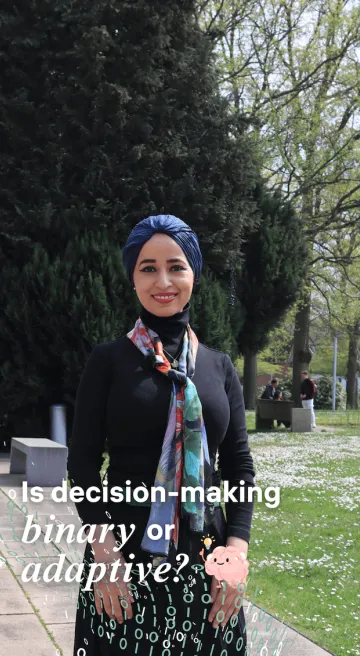New article from Constructor University explores the creative side of making decisions
People's decisions are complex and are subject to a host of factors. In a recently published article in the European Journal of Neuroscience, Constructor University neurobiologist Dr. Radwa Khalil and Martin Brüne, Professor of Psychiatry at Ruhr University Bochum, argue for a framework of decision-making that perceives creativity as a central mechanism for adapting to new challenges.
In this perspective, the authors examined the concepts of fast (intuitive) and slow (analytical) thinking based on the theories of psychologist and Nobel Prize winner Daniel Kahneman. They argue that the interplay between fast and slow thinking can be better understood through a more flexible, dynamic view that considers individual differences.
The authors expanded Kahneman's concept to incorporate the aspect of adaptability, which depends on the individual's personality, environmental conditions and experiences, and placed creativity as a central component of adaptive decision-making. Creative thinking helps to act flexibly, innovatively and effectively in uncertain or complex situations and offers possibilities for adaptive decisions – especially in dynamic or rapidly changing environments.
The neurological basis of adaptive decision-making and creativity is the interaction of different brain regions and networks that enable cognitive control, flexibility and associative thinking. This framework describes some central mechanisms of different brain regions, such as the cortex (control center of higher-order functions), striatum (controls motor, reward, and executive functions) and thalamus (passive relay station of information).
Link to the study:
Adaptive Decision-Making “Fast” and “Slow”: A Model of Creative Thinking. https://doi.org/10.1111/ejn.70024
Questions answered by:
Dr. Radwa Khalil | Neurobiologist
rkhalil@constructor.university | Tel.: +49 421 200-3430

